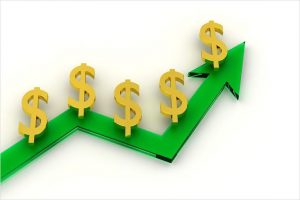How to determine the break-even point of the enterprise
 Both in current activities and in production planning, a fairly efficient and simple tool for determining the necessary profit is used – break-even analysis.
Both in current activities and in production planning, a fairly efficient and simple tool for determining the necessary profit is used – break-even analysis.
Before you determine the break-even point of the enterprise in the calculation methodology include a number of assumptions:
The dependence of revenue and production costs is linear;
In the period of calculation of the break-even point, prices, variable costs, the structure of output does not change.
Changes in fixed and variable costs can be accurately measured.
At the end of the calculation period, the company has no stocks of unsold products, that is, the company sells everything that has produced.
From these assumptions it follows that the break-even point is an indicator of the volume of production at which the normal profit is 0. That is, the proceeds from the sale of products will only cover the full cost of production, and each subsequent product after the break-even volume will be profitable.
The break-even point has synonyms “critical point” and CPV-point.
Break-even points
In accordance with the definition, it is necessary to consider the following components of the break-even analysis.
Fixed costs – costs that do not depend on production volumes. Are inversely proportional to the dependence – a decrease in production volumes increases the specific fixed costs, and vice versa. The fixed costs include salaries of managerial and maintenance personnel, rent of office premises, maintenance payments, depreciation deductions, etc. Calculated on the entire volume of production and distributed in accordance with a specific management accounting base.
Variable costs – costs directly proportional to the volume of production. These include the salary of the personnel employed in the production, the cost of materials and raw materials, fuel, fuel and lubricants, electric power of machine tools, etc. Calculated specifically, that is, per unit of production.
In total, fixed and variable costs are the total costs that are involved in the formation of the value of the product.
Methods of pricing are guided either by costs or demand for products. The first is to charge the full cost of production of an established rate of return. Then the development strategy of production is aimed at reducing costs, which directly affects the cost of production. The second is to study the need for the product, the analysis of the estimated perception of the product. In this case, the consumer correlates the value of the goods with its value and makes a decision about the purchase. Pricing in this way is determined by marketing strategies, promotions, brand popularity, fashion model, etc.
Models
Changes in components of the critical point are determined by two models of break-even analysis.
The economic model is that the increase in production volumes is possible only by reducing the cost of production. And therefore, at a certain point in time, the sales revenue reaches its peak and begins to decline — that is, the efficiency of an increase in volume becomes lower than the efficiency of a price reduction. In accordance with the economic model, the company has two break-even points, which are particularly affected by changes in variable costs.
The accounting model allows for the fixation of variable costs and realizable prices and has a linear appearance. In accordance with this model, an enterprise has a single break-even point and mathematical formulas are used to determine it. The particular importance of the accounting model can be noted when starting planning activities. Then, in accordance with the size of the break-even volume and the costs attributable to it, the management of the company decides on the launch or liquidation of production.
Formula
Depending on the objectives of the analysis, the critical point can be determined in monetary and physical units.
In ruble terms, the calculation is made according to the formula:
Tb = Zpost / ((C-Zper) / C),
In unit terms:
Tb = Zpost / (C-Zper),
where TB is the break-even point in product units or rubles,
The post – the full amount of fixed costs, RUB.,
C – specific price, rub / unit,
Zper – variable costs per unit, rub / unit.
Note! The presented formulas can be used only in the production of one type of product or at a fixed production structure for the period of analysis. If there are several types of products, then the calculation takes into account their share in sales and specific fixed costs allocated to each type of product.



